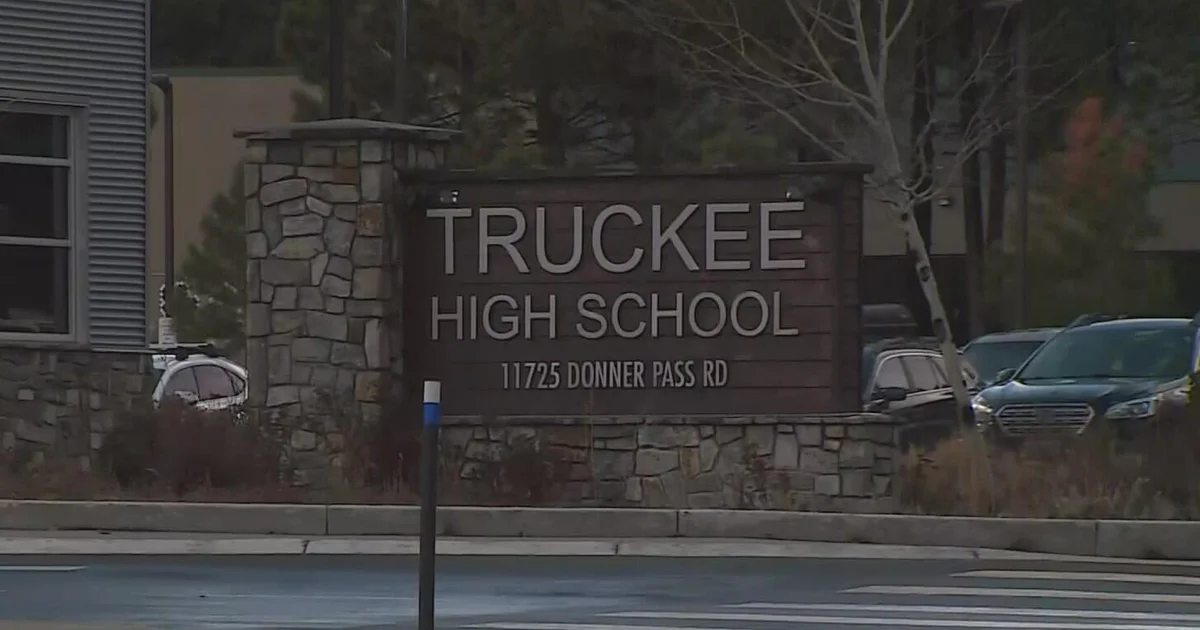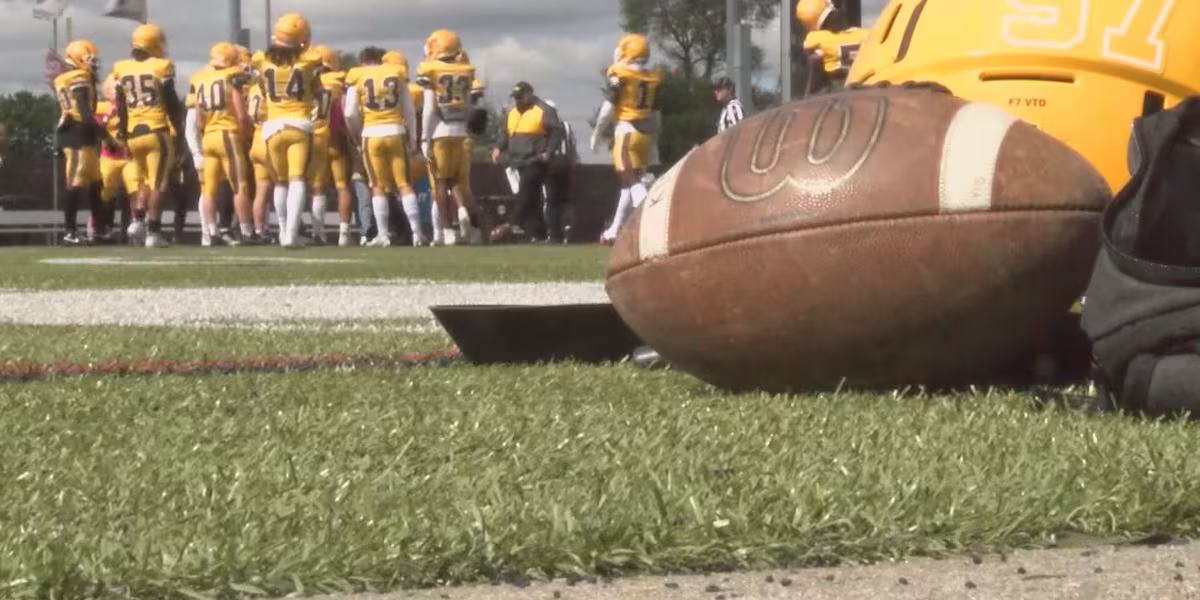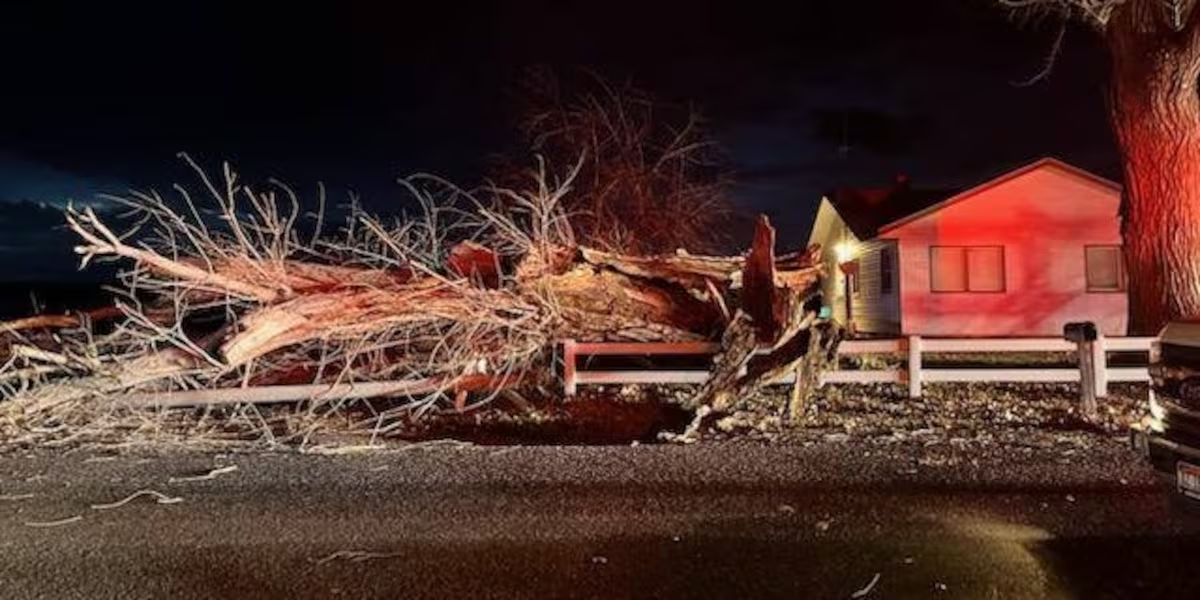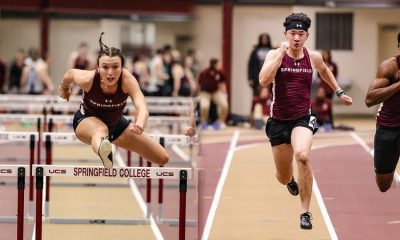Share
Tweet
Share
Share
Email
Six local athletes earned All-American status at the NJCAA Division I Outdoor National Championships held in Hutchinson, Kansas:
Morgan Pepe (Ironwood Ridge: Fifth place in Pole Vault), Hannah Droeg (Ironwood Ridge: Sixth place in Heptathlon), Ella Allred (Benson: Seventh place in 4×800 relay), Reatta Danhof (Ironwood Ridge: Seventh place in 4×800 relay), Linda Rivero (Desert View: Seventh place in 4×800 relay), and Nathaniel Curtiss (Rincon/University: Third place in High Jump).
Former Palo Verde basketball standout Angel Addleman earned the Great Southwest Athletic Conference (GSAC) Cliff Hamlow Champion of Character Award for OUAZ. According to the GSAC, Addleman has been a standout on the court for the Spirit Women’s Basketball team, averaging 15.3 points per game and regularly earning Player of the Week considerations. Off the court, she holds an impressive 3.95 GPA as a Communications major and has earned Scholar-Athlete honors at both the NCCAA and GSAC levels. A leader in faith and service, she actively participates in the campus Worship band, contributes to Spirit Life events, and volunteers with the elderly and at youth basketball camps.
Former Ironwood Ridge standout Devyn Netz was named to the NFCA West Region Team.
This list will be updated all year in an effort to recognize all former local prep stars who have gone on to win either academic and/or athletic awards at the next level. These are not high school awards but collegiate and professional recognition. NOT CHAMPIONSHIPS. If you are aware of anything I have missed along the way, please let me know. amoralesmytucson@yahoo.com
Portions from news release.
Devyn Netz/Softball
Ironwood Ridge/Arizona
D1Softball Top 100 (1/13)
Top Cat of the Week (2/10)
Big 12 Pitcher of the Week (2/25)
Softball America Star of the Week (4/2)
Top Cat of the Week (4/1)
Arizona Ruby Award Finalist (4/25)
Arizona Highlight of the Year (4/28)
Big 12 Pitcher of the Week (4/29)
Big 12 All-Tournament Team (5/10)
Big 12 Player of the Year (5/7)
Big 12 First Team (5/7)
Big All-Defense Team (5/7)
NFCA West Region First Team (5/15)
Morgan Pepe/Track and Field
Ironwood Ridge/Pima
NJCAA Indoor All-American Pole Vault (3/9)
All-American (5/17)
Nathaniel Curtiss/Track and Field
Rincon/UHS/Pima
All-American (5/17)
Hannah Droeg/Track and Field
Ironwood Ridge/Pima
All-American (5/17)
Ella Allred/Track and Field
Benson/Pima
All-American (5/17)
Reatta Danhof/Track and Field
Ironwood Ridge/Pima
All-American (5/17)
Linda Rivero/Track and Field
Desert View/Pima
All-American (5/17)
Angel Addleman/Basketball
Palo Verde/ OUAZ
GSAC Winter Scholar Athlete (2/25)
GSAC All-Conference (2/25)
Tanvi Narendran/Tennis
Rincon/UHS/Arizona
Big Scholar Athlete of the Year (4/30)
Olivia Rubio/Beach Volleyball
Catalina Foothills/Arizona
XII Student Athlete of the Month (3/22)
Arizona Unsung Hero Award Finalist (4/24)
Arizona Unsung Hero Award (4/28)
Julia Holt/Softball
Canyon del Oro/Howard
MEAC Preseason Pitcher of the Year (1/30)
MEAC Preseason First Team (1/30)
CSE Top 50 (1/25)
MEAC Pitcher of the Week (3/4)
MEAC All-Academic (5/5)
MEAC All-Conference (5/6)
Alexis Aguirre/Softball
Canyon del Oro/Eastern AZ Coach
ACCAC Coach of the Year (5/7)
Arianna Flores/Softball
Salpointe/Pima
ACCAC D-II Pitcher of the Week (1/29)
ACCAC D-II Pitcher of the Week (2/5)
ACCAC D-II Pitcher of the Week (2/13)
ACCAC D-II Pitcher of the Week (2/20)
ACCAC D-II Co-Pitcher of the Year (5/7)
First Team All-ACCAC Division II (5/7)
All-Region I, Division II (5/7)
Jiselle Nunez/Softball
Tucson/Pima
ACCAC D-II Player of the Week (2/13)
ACCAC D-II Player of the Week (2/26)
First Team All-ACCAC D-II (5/7)
All-Region I, Division II (5/7)
Natalya Rivera/Softball
Sunnyside/Pima
NJCAA D-II National Player of the Week (2/20)
ACCAC D-II Player of the Week (2/20)
ACCAC D-II Player of the Week (1/29)
First Team All-ACCAC (5/7)
All-Region I, Division II (5/7)
Talia Martin/Softball
Mountain View/Pima
ACCAC D-II Player of the Week (3/12)
First Team All-ACCAC (5/7)
All-Region I, Division II (5/7)
Jessica Thompson/Softball
Tanque Verde/Pima
Second Team All-ACCAC (5/7)
All-Region I, Division II (5/7)
Aubrey Marx/Softball
Cienega/Pima
ACCAC Player of the Week (4/25)
Second Team All-ACCAC (5/7)
All-Region I, Division II (5/7)
Alyssa Noriega/Softball
Pueblo/Pima
Second Team All-ACCAC (5/7)
All-Region I, Division II (5/7)
Lili Vigil German/Softball
Ironwood Ridge/Arizona Western
ACCAC Pitcher of the Week (3/26)
All-ACCAC First Team (5/7)
All-Region I, Division I (5/7)
Destanee Nez/Softball
Canyon del Oro/Eastern AZ
All-ACCAC First Team (5/7)
All-Region I, Division I (5/7)
Brianna Wunderle/Softball
Marana/Central Arizona
ACCAC Player of the Week (4/18)
All-ACCAC First Team (5/7)
All-Region I, Division I (5/7)
Mya Hernandez/Softball
Sahuaro/Central Arizona
All-ACCAC First Team (5/7)
Reese McFarland/Softball
Sabino/Eastern Arizona
All-ACCAC First Team (5/7)
Luis Pablo Navarro/Baseball
Walden Grove/Pima
ACCAC D-II Pitcher of the Week (2/20)
ACCAC D-II Second Team (4/29)
All-Region Second Team (4/29)
Belen Camacho/Softball
Pueblo/Pima
ACCAC Pitcher of the Week (4/13)
ACCAC Pitcher of the Week (4/25)
Paul Vasquez/Wrestling
Pueblo/Sahuarita Coach
NWCA Coach of the Year (4/2)
Savannah Gutierrez/Soccer
Tucson/Texas A&M International
Defensive Player of the Year (4/29)
Gianna Pancost/Softball
Sabino/Colorado Springs
All-RMAC Second Team (4/30)
Daniel Miranda/Wrestling
Mountain View/ASU
NWCA Scholar All-American (4/2)
Trayvion White-Austin/Track
Sahuaro/Arizona
NCAA Indoor All-American (3/15)
Arizona Sapphire Ward Finalist (4/26)
Mason White/Baseball
Salpointe/Arizona
Perfect Game Preseason Third Team All-American (1/7)
Preseason All-Big 12 Team (1/23)
NCBWA Preseason All-American (2/7)
Big 12 Player of the Week (4/21)
Michael Masunas/Football
Sabino/Michigan State
Spartan Academic Highest Honor (4/15)
Brianna Arizmendi/Basketball
Salpointe/Knox
CSC Academic All-District (3/27)
Audrey Jimenez/Wrestling
Sunnyside/Lehigh
MOW US U20 World Team (4/6)
Brian Peabody/Basketball
Sahuaro/Pima Coach
NJCAA West District COY (3/25)
Joey Staiger/Baseball
Cienega/National Park
NJCAA Region 2 Pitcher of the Week (3/1)
Isaiah Roebuck/Baseball
Marana/Jamestown
Kennedy S. Wanner Award (4/4)
Lucas Casey/Baseball
Canyon del Oro/Pima
ACCAC D-II Pitcher of the Week (1/29)
ACCAC D-II Pitcher of the Week (3/26)
Diego Bejarano/Baseball
Tucson/ Park-Gilbert
GSAC Champion of Character (3/26)
Lauryn Carbajal/Softball
Sunnyside/Western New Mexico
Athlete of the Week (3/24)
D-II Top Hitter (3/25)
Lillian Gradillas-Flores/Wrestling
Mountain View/Southern Oregon
NAIA All-America (3/15)
Marisol Peña/Wrestling
Cienega/GCU
NCWC All-American (3/15)
Paris Mikinski/High Jump
Salpointe/Arizona
NCAA Indoor All-American (3/15)
Maddie Hairgrove/Softball
Catalina Foothills/Jamestown
NSAA Pitcher of the Week (3/10)
Leah Salas/Softball
Sahuarita/Embry Riddle
GSAC Player of the Week (3/10)
Vanessa Brink/Softball
Empire/Embry Riddle
GSAC Pitcher of the Week (3/10)
Hope Hisey/Soccer
Canyon del Oro/Spokane
USL Super League Team of the Month (3/4)
Alma Garcia/Softball
Salpointe/Benedictine
Midwest College Classic Player of the Tournament (3/7)
Maylee Thompson/Track and Field
Willcox/Pima
NJCAA Indoor All-American Long Jump (3/9)
NJCAA Indoor All-American Pentathlon (3/9)
Coben Bourguet/Football
Salpointe/ASU
NFF Valley of the Sun Scholar Athlete (3/8)
Trenton Bourguet/Football
Marana/ASU
NFF Valley of the Sun Scholar Athlete (3/8)
Bria Medina/Basketball
Salpointe/Knox College
MWC Performer of the Week (1/12)
MWC Performer of the Week (2/17)
Midwest All-Conference (3/4)
Sean Elliott/Basketball
Cholla/Arizona
UA Humanities Alumni of the Year (3/3)
Alyssa Bronw/Basketball
Sahuaro/UNLV
Player of the Game (2/23)
Mat’Tanaya Vital/Basketball
Amphitheater/Pima
ACCAC D-II Player of the Week (2/27)
Makayla Holthaus/Basketball
Ironwood Ridge/OUAZ
GSAC Winter Scholar Athlete (2/25)
Landyn Lewis/Golf
Tucson/PGA Southwest
PGA Southwest Patriot Award (2/28)
Bruno Fina/Football
Salpointe/Duke
CSC Academic All-District (1/7)
CSC Academic All-America 2nd Team (1/28)
Nayeli Nidez Acuña/Basketball
Sunnyside/Knox College
MWC Performer of the Week (1/21)
Lathan Ransom/Football
Salpointe/Ohio State
PFF Highest Graded Run Defender (1/17)
Bryce Cotton/Basketball
Palo Verde/Perth Wildcats
Game 23 MVP (1/16)
Game 22 MVP (1/15)
Game 21 MVP (1/6)
Wes Ball/Basketball
Marana/Pima
ACCAC Player of the Week (1/9)
Dylan Cook/Football
Ironwood Ridge/Morehead State
CSC Academic All-District (1/7)
Tyler Mustain/Football
Pusch Ridge/Arizona
CSC Academic All-District (1/7)















































































